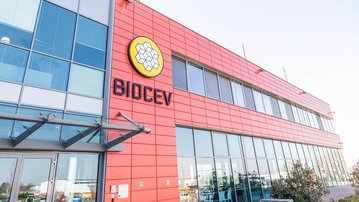About us
An efficient immune response requires cells of the immune system to be at the right place at the right time and depends upon their migration and correct positioning in lymphoid tissues. We will study biological mechanisms which enable cells to establish morphological polarity and motile behavior and we are interested in how defects in leukocyte motility are reflected in immunity on system level.
We will focus on two major areas. First, we will study the cell biology of leukocyte motility in vitro. Morphological changes and motility of eukaryotic cells are driven by cytoskeleton. We will use high resolution rapid live cell imaging to study the interplay between cell signaling and cytoskeletal dynamics when leukocytes are exposed to an external input such as chemokine. Further, we will establish microfabrication of silicon devices. Those devices can be used to expose cells to mechanical confinement or they can be imprinted with microchannels that can form various constrictive geometries. We will use those devices to expose leukocytes to an alternative input – mechanical stress. Mechanical stress plays unknown role in leukocyte biology although it is well known to play a major role in biology of adherent cells. The combination of imaging and use of microfabricated devices will allow us to establish our independent and novel research program in leukocyte mechanobiology.
Second, we will study leukocyte migration in vivo. To this end, we will use intravital two photon microscopy. We will image and analyze homing and migratory parameters of leukocytes in lymphoid organs and inflamed peripheral tissues. Intravital imaging will complement our reductionistic in vitro approach and it will allow us to establish holistic level of understanding of our subject.








